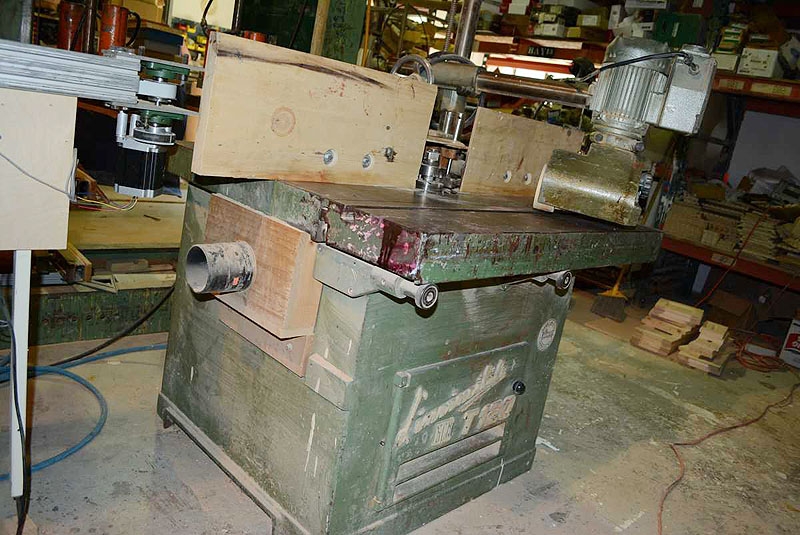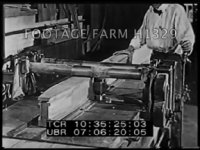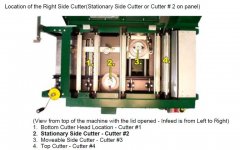Cismontguy
Aluminum
- Joined
- Feb 28, 2007
- Location
- Earlysville, VA
Hello everyone,
I am trying to either find or build a wood working machine that I believe does not exist anymore but maybe someone out there knows of a source or has some ideas of how to go about building one? We have an entire machine shop at our disposal and we have successfully built other custom machines like a streamline steel tube former which was a challenge.
What I need to make or find is a Spindle Shaper that can take custom knives (critical aspect) that the head can be accurately moved into the piece of wood. maximum distance required to move is 2-3 inches. Not much but when you take a look at our 3 HP Grizzly Shaper, you see everything is attached to the underside of the top steel work surface. So trying to come up with a SAFE mechanism to move this cutter head with all its attachments is not easy.
The work piece (wood) will be fed along a guide fence and then the cutter head will be engaged, into the wood and then advanced for a set distance and then the cutter head will be withdrawn from the wood piece. The only other way I know how to do this is by pivoting the work piece into the stationery shaper head, mover the piece along the desired length of the shaping, and then pivot it out. Tried it once on our current shaper, scared the heck out of me.
So any ideas, or CONSTRUCTIVE suggestion would be appreciate. Please do not suggest CNC router cause we have had one and it would not do the job in any reasonable time, so I sold it.
Thanks!
I am trying to either find or build a wood working machine that I believe does not exist anymore but maybe someone out there knows of a source or has some ideas of how to go about building one? We have an entire machine shop at our disposal and we have successfully built other custom machines like a streamline steel tube former which was a challenge.
What I need to make or find is a Spindle Shaper that can take custom knives (critical aspect) that the head can be accurately moved into the piece of wood. maximum distance required to move is 2-3 inches. Not much but when you take a look at our 3 HP Grizzly Shaper, you see everything is attached to the underside of the top steel work surface. So trying to come up with a SAFE mechanism to move this cutter head with all its attachments is not easy.
The work piece (wood) will be fed along a guide fence and then the cutter head will be engaged, into the wood and then advanced for a set distance and then the cutter head will be withdrawn from the wood piece. The only other way I know how to do this is by pivoting the work piece into the stationery shaper head, mover the piece along the desired length of the shaping, and then pivot it out. Tried it once on our current shaper, scared the heck out of me.
So any ideas, or CONSTRUCTIVE suggestion would be appreciate. Please do not suggest CNC router cause we have had one and it would not do the job in any reasonable time, so I sold it.
Thanks!



 Richard has made shaper fixtures to do some astounding 3D work for furniture. I've got quite a few years of tricking my shapers into doing large millwork parts.
Richard has made shaper fixtures to do some astounding 3D work for furniture. I've got quite a few years of tricking my shapers into doing large millwork parts. or help us provide more info since you asked.
or help us provide more info since you asked. 



